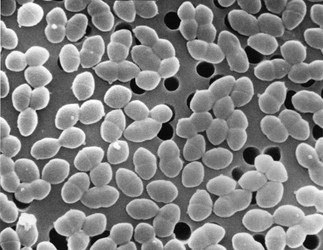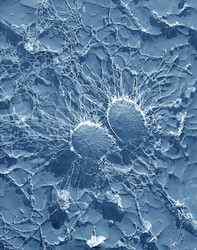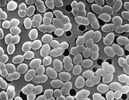Bacilli
- Bacillales
- Alicyclobacillus
- Ammoniphilus
- Amphibacillus
- Aneurinibacillus
- Anoxybacillus
- Bacillus
- Brevibacillus
- Brochothrix
- Caryophanon
- Exiguobacterium
- Filibacter
- Filobacillus
- Gemella
- Geobacillus
- Gracilibacillus
- Halobacillus
- Jeotgalibacillus
- Jeotgalicoccus
- Kurthia
- Lentibacillus
- Listeria
- Macrococcus
- Marinibacillus
- Marinococcus
- Oceanobacillus
- Oxalophagus
- Paenibacillus
- Paraliobacillus
- Pasteuria
- Planococcus
- Planomicrobium
- Saccharococcus
- Salibacillus
- Salinicoccus
- Sporolactobacillus
- Sporosarcina
- Staphylococcus
- Sulfobacillus
- Thermicanus
- Thermoactinomyces
- Thermobacillus
- Turicibacter
- Ureibacillus
- Virgibacillus
- Lactobacillales
- Abiotrophia
- Acetoanaerobium
- Aerococcus
- Agitococcus
- Alkalibacterium
- Allofustis
- Alloiococcus
- Atopobacter
- Carnobacterium
- Desemzia
- Dolosicoccus
- Dolosigranulum
- Enterococcus
- Eremococcus
- Facklamia
- Globicatella
- Granulicatella
- Ignavigranum
- Isobaculum
- Lactobacillus
- Lactococcus
- Lactosphaera
- Leuconostoc
- Marinilactibacillus
- Melissococcus
- Oenococcus
- Oscillospira
- Paralactobacillus
- Pediococcus
- Streptococcus
- Syntrophococcus
- Tetragenococcus
- Trichococcus
- Vagococcus
- Weissella
References
Garrity, G. M., J. A. Bell, and T. G. Lilburn. 2004. Taxonomic Outline of the Prokaryotes. Bergey's Manual of Systematic Bacteriology, Second Edition. Release 5.0.
Title Illustrations

| Scientific Name | Enterococcus |
|---|---|
| Comments | This scanning electron micrograph (SEM) depicted numbers of bacteria, which were identified as being Gram-positive Enterococcus sp. bacteria. Previously identified as "Group D" Streptococcus organisms, the most clinically relevant of these bacteria are, E. faecalis, and E. faecium. Enterococcus spp. bacteria are notoriously linked as etiologic agents responsible for nosocomial, or "hospital-borne" illnesses, such as "Vancomycin Resistant Enterococci", or VRE infections. These organisms are "commensal" in nature, which means that they normally colonize the human digestive tract, and become pathogenic when their host becomes immunosuppressed, such as after a surgical procedure, or during a prolonged illness, or in immunocompromised individuals who might be undergoing chemotherapy, or in the case of AIDS patients. |
| Creator | CDC/Janice Carr |
| Specimen Condition | Dead Specimen |
| Source Collection | Public Health Image Library (Centers for Disease Control) |
| Scientific Name | Staphylococcus aureus |
|---|---|
| Comments | Bacterial cells of the bacteria (Staphylococcus aureus) which is one of the causal agents of mastitis in dairy cows. Its large capsule protects the organism from attack by the cow’s immunological defenses. |
| Acknowledgements | Image courtesy USDA Beltsville Agricultural Research Center (BARC) |
| Specimen Condition | Dead Specimen |
| Source | Bacteria (Staphylococcus aureus) |
About This Page
Page copyright © 2006
All Rights Reserved.
- First online 09 March 2006
Citing this page:
Tree of Life Web Project. 2006. Bacilli. Version 10 March 2006 (temporary). http://tolweb.org/Bacilli/59853/2006.03.10 in The Tree of Life Web Project, http://tolweb.org/










 Go to quick links
Go to quick search
Go to navigation for this section of the ToL site
Go to detailed links for the ToL site
Go to quick links
Go to quick search
Go to navigation for this section of the ToL site
Go to detailed links for the ToL site